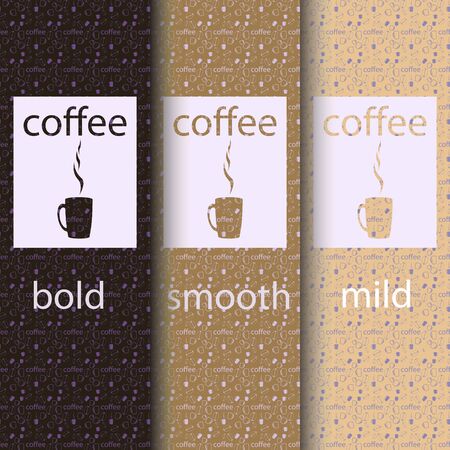1. The Rise of Carbon-Neutral Coffee
In recent years, the coffee industry in the United States has seen a major shift toward sustainability, with carbon-neutral coffee brands leading the charge. This movement is not just a trend—its a response to growing environmental awareness and consumer demand for eco-friendly products. Americans are more conscious than ever about where their coffee comes from and how its made, pushing brands to rethink everything from sourcing beans to packaging.
What Does “Carbon-Neutral” Mean?
Being carbon-neutral means that a company balances out the amount of carbon dioxide it emits by reducing emissions where possible and offsetting the rest through sustainable practices like reforestation or investing in renewable energy. In the world of coffee, this includes every step of the process—from farming and roasting to shipping and packaging.
Why Consumers Are Driving the Change
The rise of climate-conscious consumers is one of the biggest reasons behind the push for carbon-neutral coffee. Shoppers are reading labels more carefully and choosing brands that align with their values. According to surveys, many Americans are even willing to pay more for sustainably produced coffee if it means helping the planet.
Top Reasons Consumers Choose Carbon-Neutral Coffee:
| Reason | Description |
|---|---|
| Environmental Impact | Desire to reduce personal carbon footprint |
| Transparency | Appreciation for companies that disclose their sustainability efforts |
| Health & Wellness | Belief that eco-conscious products are better for health |
| Social Responsibility | Support for ethical labor and fair trade practices |
Coffee Brands Answering the Call
Many American coffee companies are stepping up with innovative solutions. From biodegradable packaging to solar-powered roasters, these brands are finding creative ways to cut down on waste and emissions. Some companies even offer subscription services that use reusable containers or compostable pods—making it easier than ever for consumers to enjoy guilt-free coffee.
Examples of Sustainable Packaging Innovations:
- Compostable Bags: Made from plant-based materials that break down naturally.
- Reusable Tins: Encourages customers to refill rather than toss out packaging.
- No-Plastic Labels: Uses soy-based inks and recyclable paper instead of plastic stickers.
This growing movement isnt just about saving the environment—its also about building trust and loyalty among customers who care deeply about making responsible choices. As more people look for ways to reduce their impact, carbon-neutral coffee brands will continue to play a leading role in shaping a greener future for America’s favorite morning ritual.
2. Innovations in Sustainable Packaging
When it comes to carbon-neutral coffee, packaging plays a huge role in reducing the environmental footprint. Coffee brands that are serious about sustainability are rethinking every part of the packaging process—from materials to design—to minimize waste and emissions without sacrificing flavor or freshness.
Eco-Friendly Materials Leading the Way
Traditional coffee bags often contain layers of plastic and aluminum, making them difficult to recycle. In contrast, sustainable brands are turning to innovative materials that are compostable, recyclable, or made from renewable resources.
Popular Sustainable Packaging Materials:
| Material | Description | Sustainability Benefit |
|---|---|---|
| PLA (Polylactic Acid) | A bioplastic made from corn starch or sugarcane | Compostable under industrial conditions |
| Kraft Paper with Biopolymer Lining | Pouch made from paper with plant-based inner layer | Recyclable and biodegradable options available |
| Recycled PET (rPET) | Plastic made from recycled bottles | Keeps plastic out of landfills and oceans |
| Mushroom Packaging | Packing inserts grown from mycelium and agricultural waste | Home compostable and completely natural |
Coffee Freshness Meets Sustainable Design
Sustainability doesn’t mean compromising on quality. That’s why new packaging designs focus on preserving the aroma and flavor of coffee while staying eco-friendly.
Sustainable Design Features:
- One-Way Degassing Valves: These let CO₂ escape without letting air in—vital for maintaining freshness in roasted beans. New versions are now compostable.
- No Foil Layers: Replacing foil with plant-based barriers allows for recyclability while still blocking light and moisture.
- Zipper Seals: Reusable seals help consumers store coffee longer without needing extra containers, reducing single-use plastic waste.
The Shift Toward Minimalist Branding
A growing number of carbon-neutral coffee brands are adopting minimalist designs using soy-based inks and recycled labels. This not only cuts down on chemical use but also aligns with a cleaner, more authentic brand image that resonates with eco-conscious consumers.
Did You Know?
Soy-based inks release less volatile organic compounds (VOCs) than petroleum-based alternatives, making them safer for both workers and the environment.
The packaging revolution is well underway, and these innovations show how sustainable solutions can protect the planet while keeping your morning brew tasting great.

3. From Bean to Bag: Reducing the Supply Chain Footprint
When we talk about carbon-neutral coffee, it’s not just about how the beans are grown—its also about what happens from the moment those beans are harvested to when they land in your cup. Coffee brands aiming for sustainability are rethinking every step of their supply chain to cut down on emissions and waste. Heres how theyre doing it.
Smarter Sourcing: Choosing Low-Impact Farms
Many carbon-neutral coffee companies start by partnering with farms that use eco-friendly growing practices. These farms often rely on organic methods, avoid synthetic fertilizers, and implement shade-grown techniques that protect biodiversity and reduce soil erosion.
Key Sourcing Strategies:
| Strategy | Environmental Benefit |
|---|---|
| Organic Farming | Reduces chemical runoff and improves soil health |
| Shade-Grown Coffee | Preserves tree cover and supports bird habitats |
| Direct Trade Relationships | Cuts out middlemen, reducing transportation steps |
Low-Emission Transportation
The journey from farm to roastery often involves thousands of miles of travel. To cut emissions, sustainable brands are switching to greener shipping options like sea freight instead of air freight and optimizing routes to reduce fuel usage.
Transportation Tactics:
- Consolidated Shipping: Grouping shipments to reduce trips
- Electric Delivery Vehicles: Used in local distribution networks
- Offset Programs: Investing in renewable energy or reforestation to balance out emissions
Eco-Friendly Roasting Techniques
The roasting process can be energy-intensive. Some carbon-neutral brands are adopting more efficient roasting equipment or even using renewable energy sources like solar or wind power at their facilities.
Examples of Energy-Efficient Roasting:
- Loring Smart Roasters: Use less fuel and emit fewer pollutants
- Solar-Powered Roasteries: Harness clean energy for daily operations
- Heat Recycling Systems: Capture excess heat and reuse it during the roast cycle
Sustainable Packaging and Distribution
The final leg—from roastery to retailer or doorstep—is where packaging and distribution come into play. Brands are using compostable bags, recyclable materials, and minimalist designs that require less ink and processing. Many also choose fulfillment centers close to major markets to shorten delivery distances.
Packaging Innovations:
| Material | Sustainability Feature |
|---|---|
| Compostable Bags | Break down naturally without leaving microplastics behind |
| Kraft Paper + Bioplastics | Sourced from renewable resources like cornstarch or sugarcane |
| No Foil Linings | Makes bags easier to recycle through standard municipal programs |
This holistic approach—from bean to bag—shows how committed coffee brands are going beyond just good intentions. By tackling emissions at every stage, they’re building a more sustainable future, one cup at a time.
4. Curbside Consciousness: Educating Consumers
As more coffee brands commit to carbon-neutral goals, they’re realizing that the packaging revolution doesn’t stop at compostable bags or recyclable pods. Its also about helping consumers understand how to responsibly dispose of these materials. Education is key — and leading brands are tapping into storytelling, smart labeling, and digital tools to make sustainable practices second nature.
Storytelling with Purpose
People connect with stories. Coffee brands are using this to their advantage by sharing the journey of their packaging materials — from source to shelf. For example, a bag made from plant-based bioplastics might include a short narrative on the back label about how it was produced and where it can be composted. These micro-stories create emotional engagement, making consumers more likely to follow through on proper disposal.
Smarter Labels for Smarter Choices
Clear, honest labeling helps eliminate confusion. Many brands now use visual icons and simple language to guide consumers:
| Label Icon/Text | What It Means |
|---|---|
| ♻ Recyclable | This package can go in your curbside recycling bin (check local guidelines). |
| 🌱 Compostable | This item should go into your green bin or industrial compost facility. |
| 📱 Scan for Info | A QR code that links to detailed disposal instructions based on your zip code. |
The goal is to remove guesswork so consumers can take action confidently and correctly.
Digital Tools That Guide the Way
Coffee companies are also turning to tech-savvy solutions. Through mobile apps, QR codes, and websites, customers can access custom sustainability tips based on their location. A quick scan might tell someone in California that their coffee bag is backyard-compostable, while someone in New York learns it requires industrial facilities. This hyper-local education makes sustainability practical and personal.
A Few Brands Leading the Way
- Canyon Coffee: Includes handwritten-style notes on packaging explaining how every part is curbside-recyclable.
- Tiny Footprint Coffee: Uses QR codes that link to videos about their zero-waste mission and how customers can participate.
- Brewpoint Coffee: Offers an online “Sustainability Hub” with guides tailored for different U.S. cities.
The more informed customers are, the more likely they are to become everyday advocates for waste reduction. With creative communication and easy-to-use tools, coffee brands are turning kitchen counters into climate action stations — one cup at a time.
5. Beyond Packaging: Offsetting Carbon the Right Way
While sustainable packaging is a big part of the carbon-neutral journey, truly eco-conscious coffee brands know that going green doesn’t stop at compostable bags and recyclable pods. To reach genuine carbon neutrality, many are looking beyond the packaging—investing in credible carbon offset programs and renewable energy sources that have real impact.
What Are Carbon Offsets?
Carbon offsets are credits companies purchase to balance out their own emissions. One credit equals one metric ton of CO₂ removed or prevented from entering the atmosphere. These credits usually support projects like reforestation, wind farms, or methane capture initiatives.
But Not All Offsets Are Created Equal
The market is full of offset programs, but only some meet rigorous standards for transparency and long-term effectiveness. Here’s a quick comparison of credible versus questionable offset programs:
| Criteria | Credible Offset Programs | Questionable Offset Programs |
|---|---|---|
| Verification | Third-party certified (e.g., Gold Standard, Verra) | Lack independent verification |
| Permanence | Ensure long-term carbon storage or reduction | No guarantee emissions stay out of the atmosphere |
| Transparency | Public reporting and traceable data | Poor documentation or vague project details |
Renewable Energy: A Direct Path to Lower Emissions
Some coffee brands go even further by investing directly in renewable energy. That means using solar panels at roasteries, switching to clean electricity for operations, or funding community-based energy projects.
How Coffee Brands Are Making It Happen
- Solar-Powered Roasting: Companies like Equator Coffees use solar panels to power roasting facilities, cutting down on fossil fuels.
- Green Logistics: Some brands partner with carriers who use electric delivery vehicles or offset transportation emissions through verified programs.
- Energy Credits: Buying Renewable Energy Certificates (RECs) helps fund clean energy production while reducing reliance on dirty grid power.
The Big Picture: Combining Efforts for Real Impact
A holistic approach—mixing sustainable packaging, credible offsets, and renewable energy—helps coffee companies make real progress toward carbon neutrality. It’s not just about looking good; it’s about doing good in a way that’s measurable and meaningful.
Coffee lovers can support this movement by choosing brands that are transparent about their sustainability strategies—not just in how they package their beans, but how they power their business and protect the planet.


